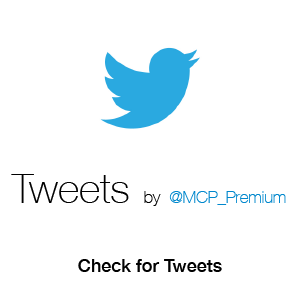Key events this week – US retail sales, US Fed Chair Powell speech, BoC & ECB decisions, and global inflation data
Recap from last week: Uncertainty Continues to Cloud the Economic Horizon.
Negative market reaction to the US tariff shock of April 2nd continued to intensify last week. However, on the eve of the implementation of reciprocal tariffs, a crucial development emerged: a short reprieve from some of the harshest measures.
Just before these much harsher reciprocal levies were set to take effect, President Trump announced a 90-day pause for further negotiations. While the pause was welcomed news for the markets, the baseline 10% import tariff remains in place, though President Trump has hinted at some possible exemptions. There was no reprieve for China on reciprocal tariffs and instead, the tariff war escalated. However, the US later announced an exemption on tariffs of imports of key electronic goods, including smartphones, from China. This announcement was later walked back by President Trump saying that it would only be a short reprieve, with a new tariff rate for electronic goods to be announced this week.
The ongoing chaotic policy announcements define a core element of the ‘new normal’: elevated and destabilizing policy uncertainty. While possibly aimed at leveraging negotiations, this persistent uncertainty poses significant risks, not only for markets, but also particularly for trade, and US firms reliant on global supply chains.
The risks of this backdrop of persistent uncertainty were reflected in the FOMC minutes last week. This uncertainty is seen as having the potential to dampen consumer spending, business hiring, and investment, and generally complicate the economic outlook. The minutes noted high uncertainty “about the net effect of an array of government policies on the economic outlook was high, making it appropriate to take a cautious approach”. Uncertainty over the effects on inflation and growth stemmed mostly from a lack of clarity over details of government policy changes. The minutes noted that growth remained solid, but was potentially moderating. Inflation concerns arising from tariffs were a key theme of the minutes, and there was a consensus that high tariff rates would possibly boost inflation.
The favorable Mar US inflation data released last week might be the calm before the tariff-inflation storm. This is a point likely to be acknowledged with caution in upcoming Fed speeches this week. Both the US CPI and PPI report for Mar surprised to the downside, indicating a likely softer PCE inflation reading in a few weeks. The fall in energy prices (gasoline), slower shelter price growth (now the slowest monthly pace of this cycle), and a contribution from a slight fall in “super-core” services prices made the largest contributions to the slowdown this month. PPI inflation was also lower than expected, as food, energy, trade margins, and warehousing prices declined. The lower-than-expected PPI inflation showed little immediate reflection of the more widespread increase in input prices reported by manufacturers in recent monthly surveys.
One of the key themes we’ve been watching in the US data flow is the divergence between weakening soft data and so far, solid hard data. After the Mar employment data and wholesale trade data last week, the adjusted Atlanta Fed GDP nowcast for the Q1 growth run rate improved slightly to -0.3%. The Atlanta Fed has also now incorporated an estimate of the Q1 “real final sales to private domestic purchasers” growth (GDP excluding the external balance). This measure has been referenced by the FOMC previously and removes the current noise from the goods trade balance. It shows that domestic demand has improved through Q1 so far, and is back to +2% annualized growth, though down from the Q4 rate of +3%.
Outlook for the week ahead; US retail sales, US Fed Chair Powell speech, BoC & ECB decisions, and global inflation data.
It will be a short week ahead of the Easter break.
This week’s focus will likely remain squarely on the unfolding tariff situation and market volatility. The tariff narrative and/or market volatility may overshadow a busy week of key data releases, Fed speeches, and central bank decisions unless these releases themselves reveal a significant impact from trade tensions.
Key factors to watch this week;
One of the key themes we’ve been watching in the US data flow is the divergence between the soft and hard data. For the moment, soft data continues to weaken while hard data remains fairly solid. The data flow this week will provide both hard data inputs into the US growth outlook for Q1 and some soft survey results for Apr.
- US retail sales are expected to rebound strongly in Mar by +1.4%, from +0.2% in Feb. We’ll be watching for a ‘pull-forward’ of auto purchases ahead of tariffs. Offsetting stronger spending may be some softer gasoline sales (due to falling prices in the CPI). The retail control group is what will feed into the GDP measure and increased by +1% last month (Feb).
- US industrial production is expected to ease by -0.2% in Mar, after a stronger rebound in Feb of +0.7%.
- Building permits are expected to be little changed at 1.45m (annualized rate) while housing starts are expected to slow to 1.42m (annualized) from 1.5m in Feb.
- The first regional manufacturing surveys for Apr will be released and may provide a further view of tariff effects. The NAHB housing market sentiment survey for Apr will also be released.
- US Q1 earnings reports will be in focus over the next few weeks; particularly regarding guidance and mentions of tariff/trade effects.
US Fed speeches will be important this week given the recent market turbulence. Fed Governor Waller will give a speech on the economic outlook on Monday and US Fed Chair Powell will also give a speech on the economic outlook on Wednesday. Both speeches will be important for how they frame the latest inflation and growth data amid the tariff and trade uncertainty as well as potentially addressing developments in the US Treasury market.
There will be several important central bank decisions this week, likely with a focus on how these central banks are navigating the tariff landscape;
- The Bank of Canada is expected to keep rates unchanged. However, the decision will be important as it balances a recent weakening in labour market conditions with expectations for firmer inflation. The latest Canada CPI for Mar is due out before the BoC meeting.
- The ECB is expected to cut rates by 25bps at this meeting. With inflation easing in the latest Mar data, the ECB is likely to consider the downside risks to growth from the tariff agenda.
- The latest RBA minutes will be released this week.
Outside of the US, inflation data will be important.
- Canada CPI is expected to ease over the month but stay elevated at +0.7% in Mar, from +1.1% in Feb (the rise in Feb was due to the end of the GST break over the holiday period). Headline CPI rebounded to +2.6% in Feb and is expected to remain elevated in Mar. The BoC core inflation measures, such as the trimmed mean also firmed recently and are expected to remain at +2.9%, having slowed to +2.5% back in Sep and Dec 24.
- UK CPI is expected to edge slightly lower to +2.7% over the year in Mar, from +2.8% in Feb. Annual core CPI is expected to slow to +3.4% in Mar from +3.5% in Feb.
- Japanese CPI is expected to firm, with the BoJ core measure excluding Fresh Food increasing to +3.2% in Mar from +3% in Feb.
There will also be a full range of Chinese data for Mar out this week including trade data (export growth was stronger than expected), Q1 GDP growth, retail sales, and industrial production.
This week, the US Treasury will auction and/or settle approx. $601bn in ST Bills, Notes, and Bonds, raising $0bn in new money. The US Treasury will also auction the 5-year TIPS and 20-year Bond this week, and both will settle at the end of the month.
QT this week: Approx $33bn of ST Bills, Notes, Bonds, and TIPS will mature on the Fed balance sheet and will be reinvested. Approx $2.7bn in Notes, Bonds, and TIPS will mature and roll off the Fed balance sheet.
The US Tax Day is this week, 15 Apr 2025.
More detail (including a calendar of key data releases) is provided in the briefing document – download the pdf below:
Comments and feedback are welcome. Please email me at kim.mofardin@marscapitalpartners.net

